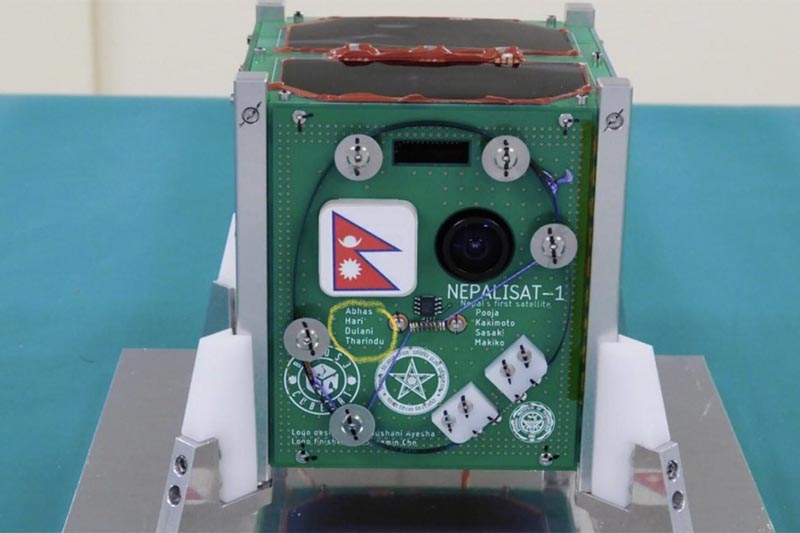Nepal’s first satellite, NepaliSat-1, launched
Kathmandu, April 18
Sixty-two years after the erstwhile Soviet Union launched Sputnik-1, the world’s first satellite, Nepal sent its first satellite ‘NepaliSat-1’ into space at 2:31 am today to gather detailed geographical information of the country.
NepaliSat-1 is supposed to reach the International Space Station at 10:45 pm on Saturday.
The satellite was launched from the Virginia Space’s Mid-Atlantic Regional Spaceport at NASA’s Wallops Flight Facility in the United States. NepaliSat-1 is being carried by a cargo spacecraft lifted into space by Antares rocket.
NepaliSat-1 is a cube satellite that weighs 1.3 kg. It is scheduled to be released from the cargo spacecraft into the lower orbit of International Space Station in the second week of June. Once released into its orbit, the satellite will revolve around the earth four times a day. The orbit lies approximately 400 kilometres above the earth. The satellite is expected to take pictures of Nepal for six to 10 minutes during each revolution.
NepaliSat 1 is expected to revolve around the earth for at least six months.
Two Nepali scientists, Aabhas Maskey and Hariram Shrestha who are studying at Japanese Kyushu Institute of Technology, developed the satellite under the BIRDS project of their institute in collaboration with Nepal Academy of Science and Technology.
The BIRDS project has been designed in association with the United Nations with the aim of helping countries launch their first satellite.
Talking to THT over phone from Japan, Maskey said, “It’s a milestone achievement for Nepal. It has paved the way for larger projects related to space science.”
The other scientist involved in the project, Hariram Shrestha, said, “It’s a remarkable achievement as the satellite was made with Nepali investment and Nepali manpower.”
Shrestha, who is also a chief technical assistant at NAST, added, “It means we are now capable of creating larger and more efficient satellites.”
Names of the scientists who developed the satellite are mentioned on the satellite.
Rabindra Dhakal, chief of Faculty of Technology at NAST, said, “Although the country might not benefit drastically from this project, the success of this project means we are now technically capable of preparing such satellites in future.”
The NAST, however, lacks ground station necessary to gather information sent by the NepaliSat 1. Dhakal said they would develop it before the release of NepaliSat-1 into its orbit.
Prime Minister KP Sharma Oli congratulated all the scientists and institutions involved in the development of the satellite. He said it was a matter of prestige for the country to have its own satellite.
“Though a humble beginning, with the launching of NepaliSat-1, Nepal has entered the Space-Era. I wish to congratulate all those scientists and institutions that were involved right from the development to its launching thereby enhancing the prestige of our country,” he said in a tweet.






